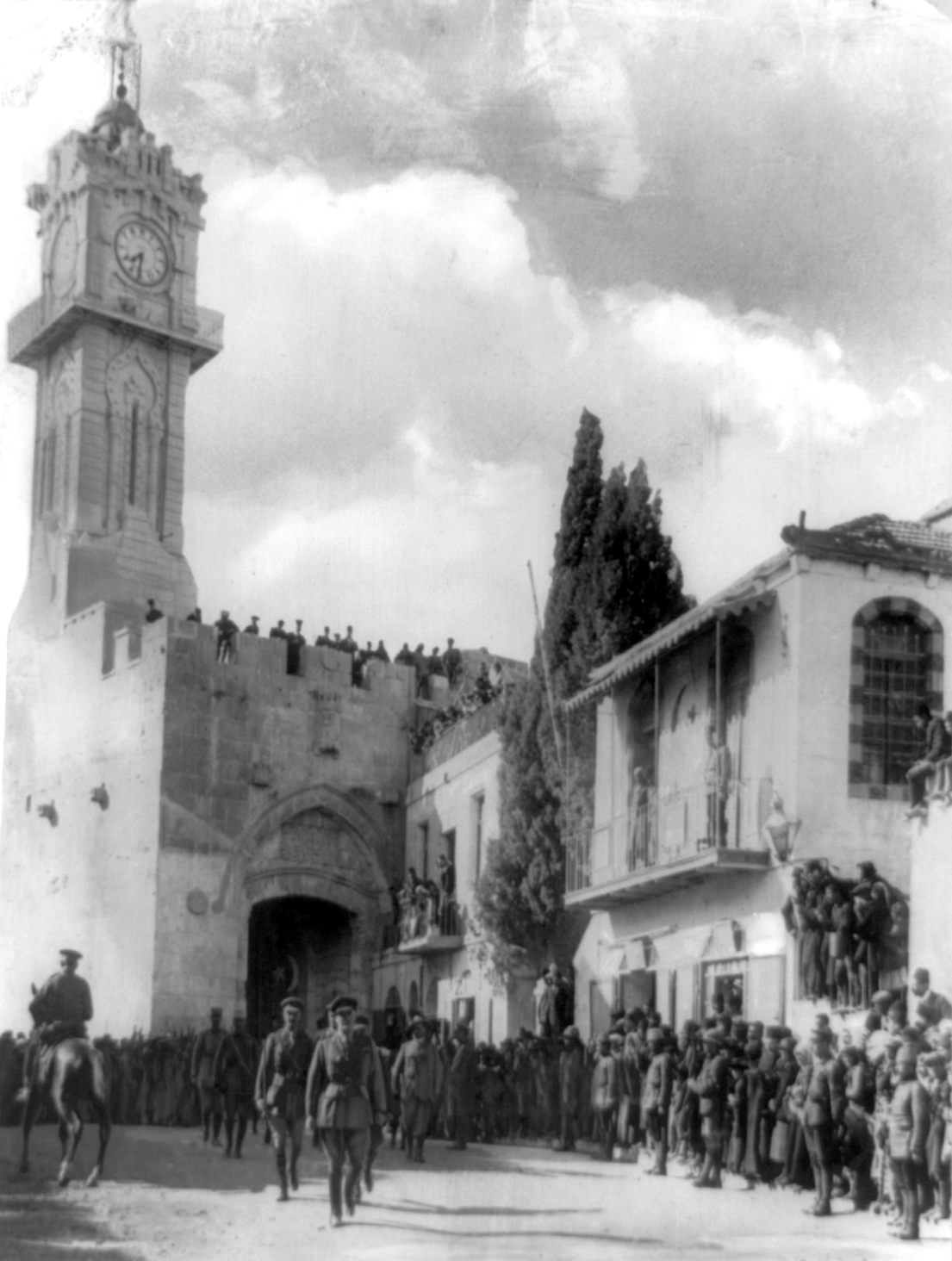The Jewish people’s connection to the land
The State of Israel did not emerge from a vacuum. The connection between the country and the Jewish people goes back 4000 years, but also has a modern history that really took off in the late 19th century.

General Allenby dismounts and walks into Jerusalem a little over a month after the Balfour Declaration, which supported the proposal to establish a Jewish homeland in the area. Image: US Library of Congress
Four thousand years ago, according to Genesis, the first book of the Bible, Abraham received the commission from the Lord: “Leave your country and your kindred and your father’s house and go to the land that I will show you. There I will make you a great nation. I will bless you and make your name great, and you will be a blessing. I will bless those who bless you and curse the one who curses you. In you all the families of the earth will be blessed.”
Five hundred years later, Moses received the command for the people of Israel: “Three times a year every male among you shall appear before the Lord your God in the place He chooses: at the Feast of Unleavened Bread, at the Feast of Weeks, and at the Feast of Tabernacles.”
Three thousand years ago, the building of the temple was started in Jerusalem, “Solomon began to build the house of the Lord in Jerusalem on Mount Moriah where the Lord had appeared to his father David”.
In spite of the Babylonian captivity when Nebuchadnezzar’s officer Nebuzaradan burned the house of the Lord down 2500 years ago, despite the fact that about 2100 years ago Antiochus VI Epiphanes desecrated the temple in Jerusalem and consecrated it to Olympian god, Zeus, and despite the destruction of Jerusalem more than 1950 years ago when the Roman Empire expelled the Jews from the area, the dream of Zion has been kept alive by the Jews who lived in the Dispersion. All these things have happened while the Jews in the diaspora have been subjected to ghettos, the Inquisition, crusades, pogroms, yellow Jewish stars, accused of ritual murder and Christ murder.
Next year in Jerusalem
A series of world powers have in turn occupied the country, but Jerusalem has never been the capital of any state other than Israel for 3000 years.
Jews living in the diaspora regularly prayed “Next year in Jerusalem” and every Sabbath, prayers were offered for “laws to go forth from Zion”.
After the destruction of the Jewish Temple, the hope of seeing it rebuilt became a central part of Jewish prayer life.
Active Christian Zionism
The first Aliyah to the Holy Land was a large wave (estimated 25,000) of Jewish immigration mainly from Eastern Europe and Yemen to the Ottoman Empire between 1881 and 1903.
These waves of immigration were preceded by a whole century of active Christian Zionism. “I believe that Jewish Zionism would not have been possible without these 100 years of tireless labors of priests, pastors, poets, scholars, cartographers from Europe and America…” said Israel’s current Prime Minister Benjamin Netanyahu during his visit to Word of Life, Sweden in April 2000.
Herzl: “I created the state”
In early 1896, Herzl published the book “Der Judenstaat” which argued for the formation of a Jewish state as the only solution to the pogroms and persecution of the Jewish people in Europe. In his book he wrote: “The idea that I have developed in this pamphlet is ancient: It is the establishment of the Jewish state…”
At the first Zionist Congress in Basel in 1897, of which Herzl was one of the initiators, it was decided that the goal was to create a homeland for the Jewish people in Eretz Israel. After the congress, Herzl wrote in his diary: “In Basel I created the Jewish state. In five years maybe, and certainly in fifty, everyone will realize it. If you want it, it is not just a dream.”Eliezer Ben-Yehuda began creating a modern Hebrew dictionary when he arrived in Israel in 1881 and devoted his entire life to expanding the language and developing new words.
During World War I, the Ottoman Empire collapsed and on December 11, 1917, Jerusalem was taken by British forces led by General Edmund Allenby.
On November 2, 1917, just over a month before General Allenby captured Jerusalem, British Foreign Secretary Arthur James Balfour announced that the British government supported the proposal to establish a Jewish homeland in what was then Palestine.
The right of the Jewish people to a homeland in what was the Mandate of Palestine was then established at the San Remo Conference in April 1920, where the victorious Allied Powers of World War I gathered and agreed.
On July 24, 1922, the predecessor of the United Nations, the League of Nations, officially recognized “the historic connection of the Jewish people with Palestine” and agreed on the formulation of the purpose of “re-establishing a national home for the Jewish people in Palestine”.
On November 29, 1947 – 50 years after the first Zionist Congress – the UN proposed that Palestine be divided into a Jewish and an Arab part. On May 14, 1948, David Ben Gurion proclaims the State of Israel – with a photograph of Theodor Herzl on the wall behind him.



